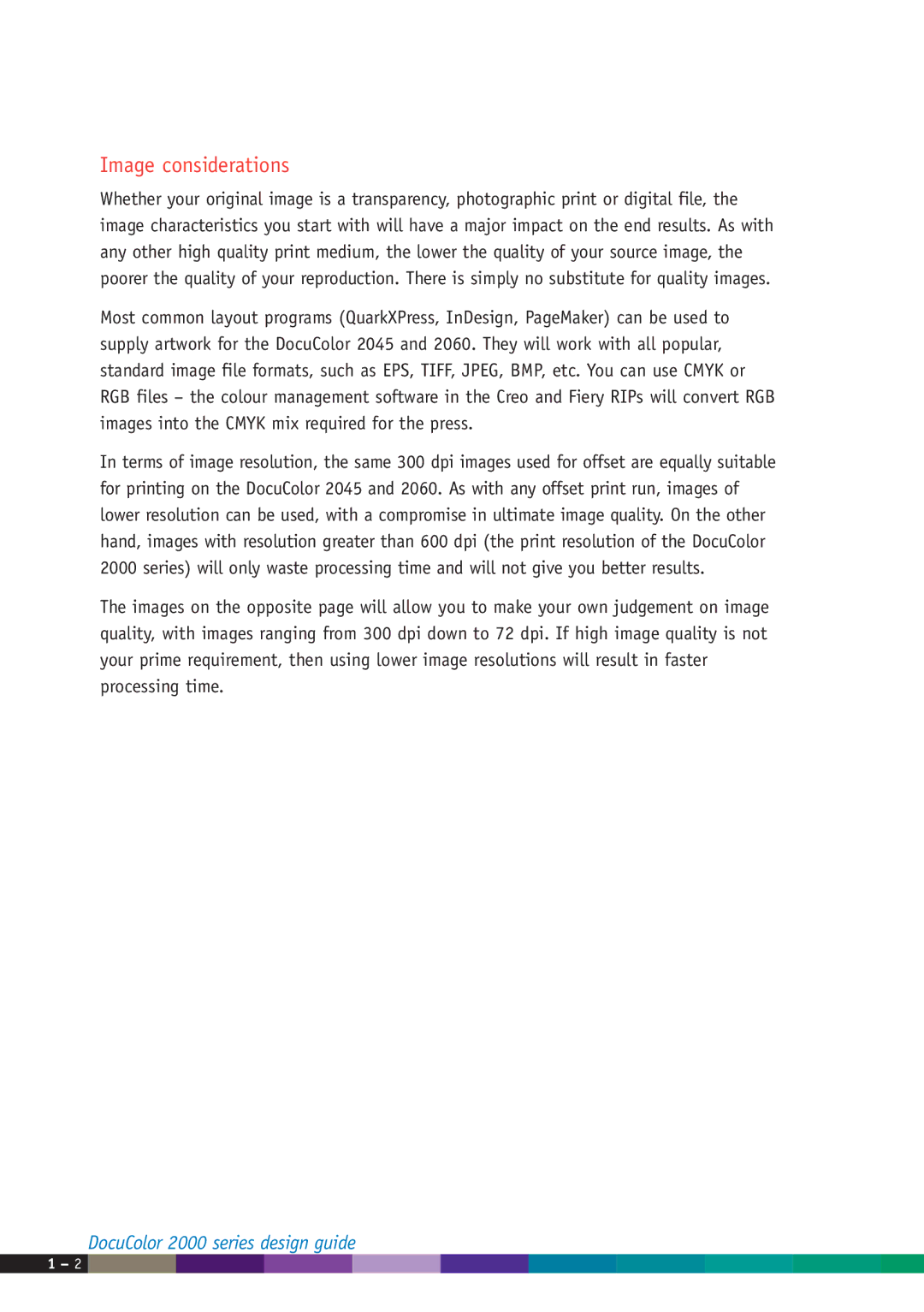Image considerations
Whether your original image is a transparency, photographic print or digital file, the image characteristics you start with will have a major impact on the end results. As with any other high quality print medium, the lower the quality of your source image, the poorer the quality of your reproduction. There is simply no substitute for quality images.
Most common layout programs (QuarkXPress, InDesign, PageMaker) can be used to supply artwork for the DocuColor 2045 and 2060. They will work with all popular, standard image file formats, such as EPS, TIFF, JPEG, BMP, etc. You can use CMYK or RGB files – the colour management software in the Creo and Fiery RIPs will convert RGB images into the CMYK mix required for the press.
In terms of image resolution, the same 300 dpi images used for offset are equally suitable for printing on the DocuColor 2045 and 2060. As with any offset print run, images of lower resolution can be used, with a compromise in ultimate image quality. On the other hand, images with resolution greater than 600 dpi (the print resolution of the DocuColor 2000 series) will only waste processing time and will not give you better results.
The images on the opposite page will allow you to make your own judgement on image quality, with images ranging from 300 dpi down to 72 dpi. If high image quality is not your prime requirement, then using lower image resolutions will result in faster processing time.
DocuColor 2000 series design guide
1 – 2 ![]()
![]()
![]()
![]()
![]()
